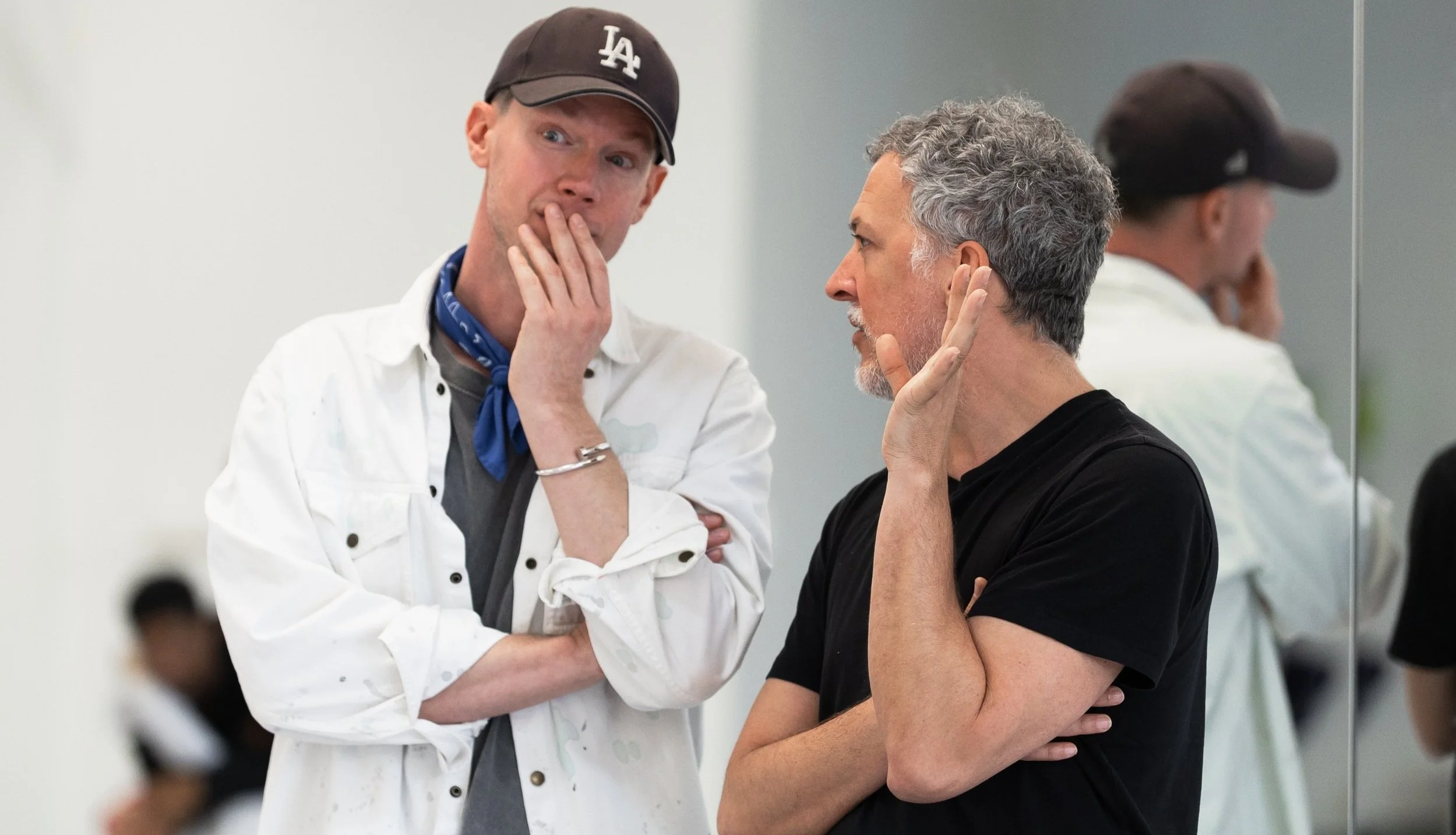Dance review: Through furnishings, friction, and Febreze, Family Room captures a household unravelling
The Falling Company choreographer Marissa Wong finds inventive ways to stage a no-holds-barred deep-dive into her parents’ divorce
Family Room. Photo by Lula-Belle Jedynak
The Dance Centre and New Works present The Falling Company’s Family Room at the Scotiabank Dance Centre on April 20 at 8 pm
THERE’S A LOT TO UNPACK during the premiere of The Falling Company’s Family Room, and not all of it is about a daughter’s dynamic with her parents. Some of it’s about the life-changing power of period underwear, about the hypothetical existence of a multiverse, and about the evolution of Port Moody’s status from suburban snooze-fest to brewery heaven.
In a no-holds-barred deep-dive into her personal life, choreographer Marissa Wong cracks open the door of her Chinese-Canadian family’s home to offer reflections on her parents’ recent divorce. Nervously, she delivers an opening monologue that provides insight into her childhood being raised by a critical mom and checked-out stoner dad. Once she got a bit older, she says, she clued into the fact that her dad was ashing out joints in the toilet bowl and her mom was using Febreze to cover up the scent (the revelation allowing a thick haze of smoke blanketing the theatre to take on new meaning).
Throughout this speech, three dancers make their way on stage. Standing in for Wong’s dad, Tamar Tabori slinks and sulks across the room, back hunched and feet dragging. Shana Wolfe’s mannerisms as Wong’s mom are much more brisk, and she moves with an angular sharpness. Justin Calvadores, meanwhile, embodies the choreographer herself with busy exuberance, whisking through space with a sense of obligation.
Props play a major role in Family Room, with the set designed by Kayleigh Sandomirsky (with Wong) mimicking the family room of the choreographer’s childhood home. A blue fabric couch is flanked on one side by a vintage lamp, and on the floor in front of it lies a red floral rug with white tassels—all set against a burgundy wall adorned with family portraits.
Each item lends the work a deeper overarching meaning rather than cluttering the stage or detracting from the dancers’ movements. Take a giant “Live, Laugh, Love” picture with a glowing frame: at one point, Wolfe and Calvadores use it to pin Tabori onto the couch, the lit-up frame creating a cage effect around her in the dark theatre. She scrambles to escape, eventually admitting defeat. It’s a heart-pounding moment, amplified by Jamie Bradbury’s resonant electronic sound composition.
Artful manipulation of the furniture partway through the piece reveals that each item actually represents a member of Wong’s family. Calvadores lifts the couch up on two legs and tilts the lamp into it, and Wolfe and Tabori mirror the furniture’s actions, hugging each other in a moment of forced intimacy as they stand on top of the rug. Wong’s mom is the couch, sturdy and stable, serving a fundamental purpose; her dad is the lamp, which needs to be plugged in to shine light, but otherwise remains dark; and Wong is the rug, a decorative item, frequently walked on.
Calvadores struggles to find a way to make the lamp and couch stay without support, and eventually lets them go. It’s a brilliant bit of choreography from Wong, delivering a clear, profound analogy about each family member’s role in the household. Costume design by Meagan Woods helps forge this connection too, especially Calvadores’s eye-catching tank top and asymmetrical pleated skort, which match the rug’s pattern.
At one point the stage darkens, and a red spotlight shines out of the wings onto Tabori as she lights up a joint, breathing it in. Her demeanour seems to flip a switch as Aretha Franklin’s soulful ’70s hit Until You Come Back To Me (That’s What I’m Gonna Do) rings out, and we’re provided with an intimate window into just how deeply Wong’s dad relies on cannabis.
Tabori rides a blissful high in a three-minute solo, carefree and rejuvenated with energy: she bounces her bum on the couch with childlike excitement, flexes a bicep giddily, does inclined push-ups against a couch arm, and then cartwheels over the back of it. “I’ve got to make you see that our love is dying,” croons Franklin, as Tabori somersaults over couch cushions and air-boxes an invisible opponent. Flamboyant flute fades into silence when Wolfe enters the room. Tabori’s mood instantly sours, a scowl overtaking her face. The two stare at each other, at impasse.
Elsewhere, a reverberating beat in the soundtrack emulates Wong’s heart pounding out of her chest as she prepares to stand up for herself: “Mom!” yells Calvadores at Wolfe. “I need to tell you something right now, and I need you to listen to me. Why don’t you love me?” Calvadores launches into a frenzied trauma dump, recalling moments where Wong’s mother was yelling at her for drinking a Smirnoff cooler, or psychoanalyzing her triple pirouettes. When they wind up collapsed on the floor at the end of it all, a visit from future Wong (“I’m you,” she tells her frightened younger self) serves as consolation and comic relief.
All told, it’s not a comfortable experience witnessing a family’s life unravel—especially in such complex ways. It certainly prompts some self-reflection and moments of relatability, which cognitive behavioural therapist Brie-Ana Laboucane helps audiences process in a talkback with Wong and the dancers after the show.
Though much of Family Room requires navigating chaos, from tense yelling matches to dense marijuana smoke, there are moments of quiet resilience from the dancers that make it a well-rounded piece and a captivating watch from front to back. Calvadores’s final solo in particular shows a sense of resigned optimism as they wrap themself in the rug, accepting the reality of the family’s dynamics. Wong makes it known with this work that while it’s all too easy to get consumed by dysfunction, it’s still possible to pick yourself up in the end. ![]()













